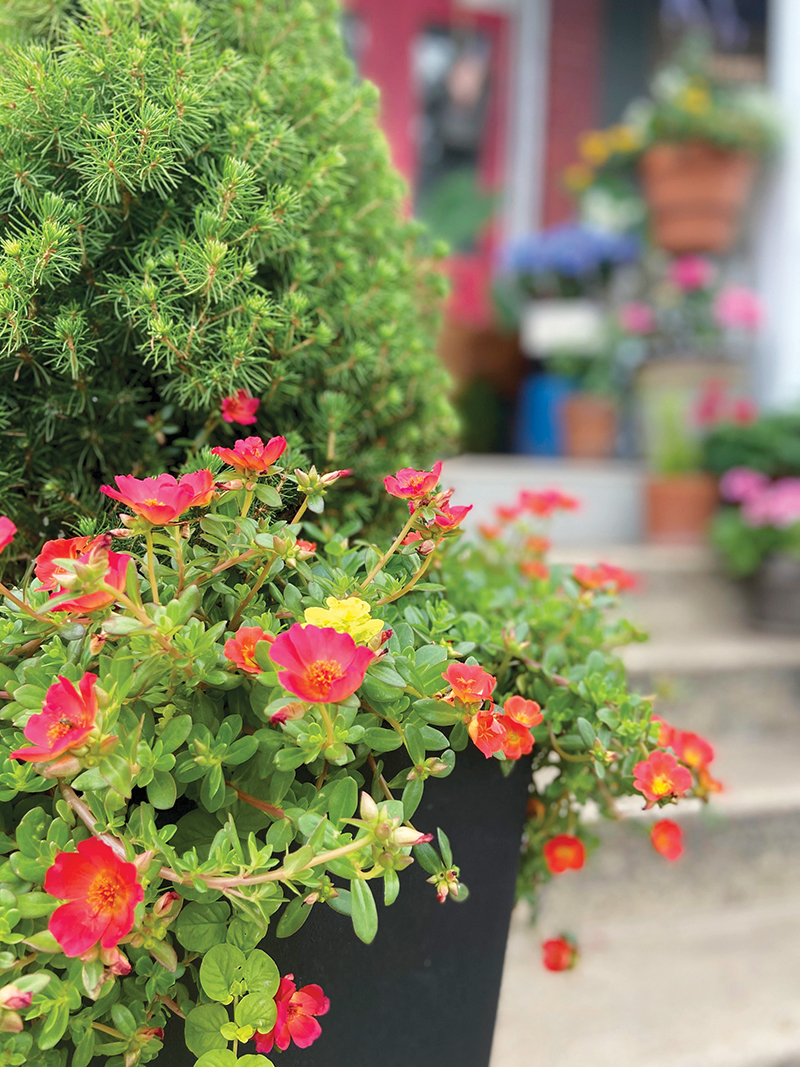Several studies have shown that adding plants to your space adds numerous health benefits. It’s been reported that adding greenery inside and around your home can help sharpen your attention, clean the air and elevate your mood.
Of course not all of us have green thumbs, so dealing with plants can be intimidating. Here are simple ways to add plants to your space so you can reap those fabulous benefits.
There are several things to think about before you add plants to your home space. Here are tips for choosing indoor and outdoor plants.
Indoor Plants
Indoor and outdoor plants are very different from each other.
“People tend to kill indoor plants because they treat them like outdoor plants,” said plant enthusiast and winner of two Prettiest Porch contests Jolene Wireback.
Wireback said people tend to overwater indoor plants and kill them because they put them on a watering schedule that may not be suitable for the plant type. She also advises paying close attention to the instructions that come with your plant and make an effort to closely follow them.
She said that an easy way to figure out if your plant needs water is to feel the soil. You can stick your finger up to your first knuckle in the soil and if it feels dry, add more water. If you don’t want to get your hands dirty, you can use a Plant Meter instead. She recommends one from Classy Casita.
When choosing where to put your plant, it is important to know which direction sunlight enters your home. And according to Wireback, not everyone finds this to be an easy task.
“I use the compass on my phone,” Wireback said. “You can adjust where you are putting the plants according to what you find on your compass.”
Now that you have this information, it is time to choose your plants. If you are a pet owner, you will want to make sure you choose something that won’t be poisonous to your furry pals.
“When you go to your local greenhouse or a store, there should be signs that show you which plants are pet friendly,” she said.
Also, pet safety information should be attached to the plant. If you are unsure, always ask an expert at the shop.
Plants Wireback suggests for beginners include Pothos, Snake plants and ZZ plants.
Pothos are a vining plant and can enhance that earthy feel if you are going for a boho look.
“They are great hanging plants,” she said.
Wireback said that Pothos will show you when they need water. When they get a little dry, their leaves droop.
“They will tell you,” she said. “Take them to a sink and give them a good drink.”
Snake plants, which grow straight up, can go a couple of weeks without water.
“They are easy because they are structural,” Wireback said. “You can get them small and big.”
She said if you overwater a Snake plant, they turn yellow.
If you insist on low-maintenance, ZZ plants only need to be watered about once a month, she said, and can handle low to medium light.
“They thrive on neglect,” Wireback said. “You can put it in a dark corner.”
Wireback said that when you bring a new plant home, it should quarantined for at least 10 days to make sure it doesn’t have any pests on them. Wipe down your plant, inspect the leaves and keep it separate from other plants.
Wireback also stresses that moving plants into a new pot it’s not necessary.
“You can keep it in the same growpot it came in,” she said. “Moving it into a new pot shocks the plant.”
Outdoor Plants
With outdoor plants, you also have to consider the direction the sunlight will be hitting them.
“If you put a shade loving plant in full sun, it’s going to scorch and die,” Wireback said.
Shade loving plants live up to their name and will only thrive in the shade. Sun loving plants should be front and center—and you guessed it—taking in lots of sunlight.
In addition, your outdoor plants are going to need a lot more water.
“They need to be watered because they are going to get hot,” Wireback said. “Outdoor plants are higher maintenance.”
Also, unlike indoor plants, you need to repot your outdoor plants.
“You always repot these,” Wireback said. “You have to transfer and repot.”
She said a lot of newbies start with container gardening but, if you feel you are ready, you can plant directly in the dirt.
An easy outdoor plant to start with is a Sweet Potato vine.
They are a trailing annual plant — they typically thrive for many months– and come in vibrant colors like bright chartreuse green to dark purple. They like sun, but can’t always be in full sun.
“They will let you know if they are in too much sun,” she said. “They will look wilted.”
These vine plants can grow up to 10 feet long!
Coleus flowers are also good outdoors plants for beginners. Most varieties thrive in dappled shade and morning sunshine.
“They are a showstopper and come in hundreds of colors,” Wireback said. “They are happy plants and easy to grow.”
These plants root easily and come in several sizes.
Hibiscus plants are also great outdoor plants — especially in the Florida sun.
“They love full sun,” Wireback said.
Hibiscus plants, which grow vertically, require a lot of water. They are colorful and come in single and double forms.
Wireback said Proven Winners has several articles on plants that helped her when she got started.
These tips will help you green up your space. You can follow Wireback and her plant adventures on Instagram.
View this post on Instagram




















